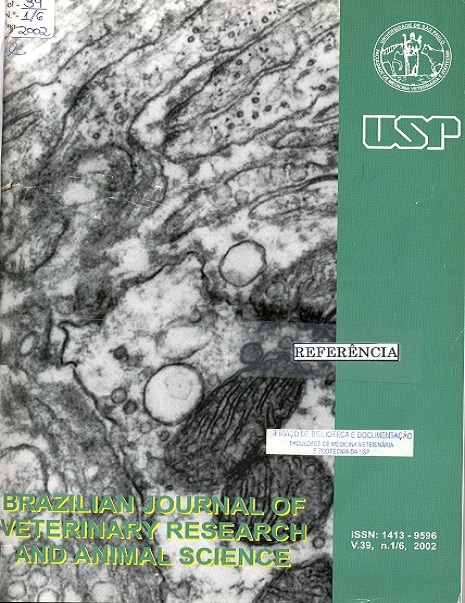Behavior and ecology of Boophilus microplus tick larvae in Brachiaria decumbens pastures
DOI:
https://doi.org/10.1590/S1413-95962002000400009Keywords:
Boophilus microplus, Larvae, Behavior, Ecology, TickAbstract
Relatively little research has been carried out on the behavioral ecology of B. microplus larvae in pasture, this being the principal objective of the current work. Six releases were made in winter (June-August, 1998) and in summer (November-January, 1998/1999). The tick larvae were laboratory reared in 20 adapted plastic syringes. Its were opened and placed in pastures of Brachiaria decumbens, at the research center of the Embrapa Gado de Leite, in Juiz de Fora city, Minas Gerais estate, Brazil. The larvae were observed three times per day, three days per week. The time taken for the larvae to reach the extremities of the grass was mainly related to the air temperature. In summer, the larvae formed smaller and less active aggregations than in winter. This behavior was considered to be a mechanism to avoid overheating and increase ventilation to save energy. Their horizontal and vertical migrations were considered a behavioral strategy to avoid the direct rays of the sun.Downloads
Download data is not yet available.
Downloads
Published
2002-01-01
Issue
Section
UNDEFINIED
License
The journal content is authorized under the Creative Commons BY-NC-SA license (summary of the license: https://
How to Cite
1.
Furlong J, Chagas AC de S, Nascimento CB. Behavior and ecology of Boophilus microplus tick larvae in Brachiaria decumbens pastures. Braz. J. Vet. Res. Anim. Sci. [Internet]. 2002 Jan. 1 [cited 2024 Jul. 26];39(4):213-7. Available from: https://www.revistas.usp.br/bjvras/article/view/5969





